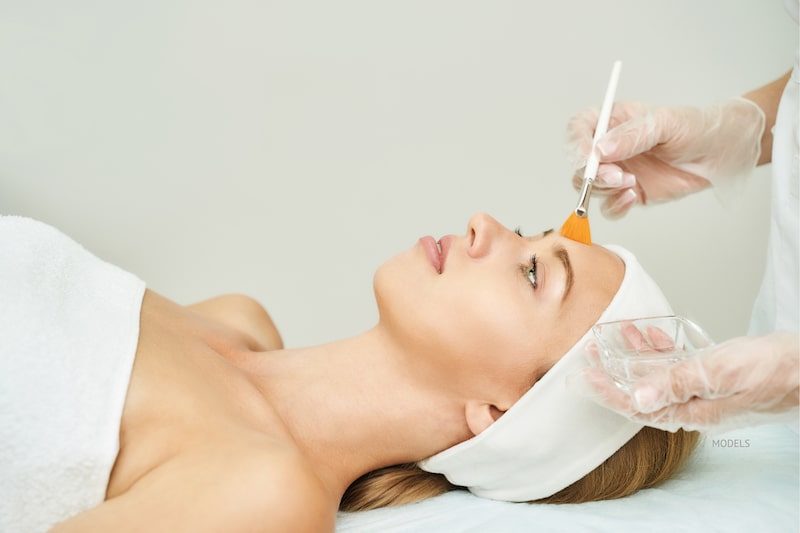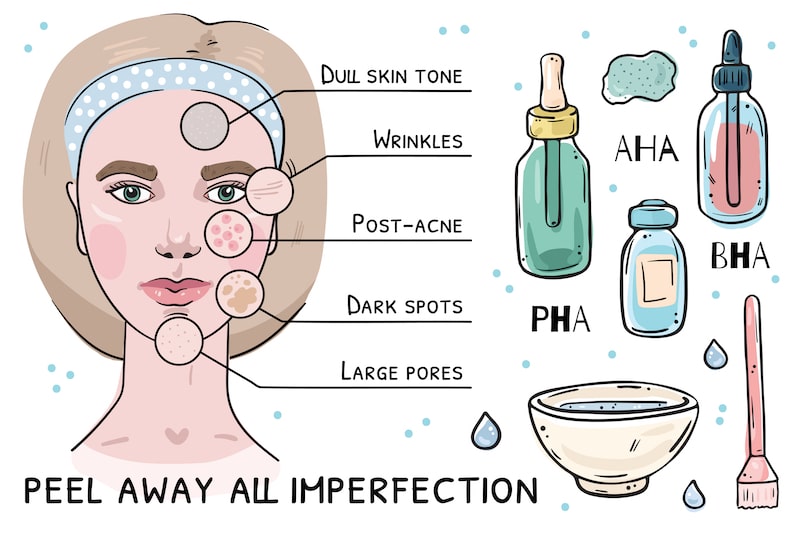3 Minute Read:
Many facial enhancement surgeries and non-surgical procedures target external wrinkles and sagging tissues beneath the skin. While these are often the most visible signs of aging, there is an additional cosmetic concern that is overlooked: skin tone.
Skin tone and texture are just as important as skin tightness and firmness. Still, many of the most well-known facial plastic surgeries and non-surgical treatments (like facelift surgery or injectables) ignore skin health entirely.
This is why external treatments, like chemical peels, are so vital.

Why Should I Care About Skin Tone and Texture?
Most women and men spend hundreds, if not thousands, of dollars every year on skin care creams, lotions, and cleansers. While these products are an essential part of a healthy skin care regimen, they are not always enough to remedy all of the skin damage we experience every day.
Genetics, environmental damage, and personal choices like diet, smoking, and alcohol consumption affect the look and feel of the skin — and not always for the better.
When skin tone and texture are not cared for, you can be left with a dull, tired, and aged appearance — even though you may not have deep creases or wrinkles. Additionally, dirt particles and dead skin cells can clog your pores, leading to acne breakouts and inflammation.
A chemical peel targets these concerns and restores a glowing and healthy complexion.
What Are the Advantages of Chemical Peels?
Chemical peels are a non-invasive, quick treatment that can help improve the condition, quality, and feel of your skin.
Whether you are looking to brighten or freshen your complexion, there is a chemical peel right for you.
With chemical peels, you can:
- Target hyperpigmentation
- Eliminate dead skin cells trapped on the surface
- Remove blemishes and scars caused by acne
- Reduce or eliminate brown spots and other signs of sun damage
- Reduce fine lines and soften wrinkles
- Stimulate collagen production, making your skin stronger and more elastic

What Does a Chemical Peel Involve?
Chemical peels apply a chemical solution to the surface skin. This solution penetrates the top layers and causes those layers of damaged skin to peel and flake off.
Chemical peels are available in a variety of strengths, using different acids to promote different levels of peeling.
Some light chemical peels allow for almost zero peeling, allowing you to return to your normal routine immediately with no physical evidence of the peel — besides the rejuvenated skin.
Moderate or deep chemical peels require a longer downtime, as it takes time for the chemical solution to penetrate the skin and stimulate the peeling process. While these peels are more “invasive,” they do allow for more significant skin resurfacing results.
If you are not interested in a chemical peel but wish to target surface skin concerns, you can consider a laser skin resurfacing treatment.
What’s the Difference Between Chemical Peels and Injectable Fillers?
Other non-surgical cosmetic procedures like injectable fillers are available to address facial concerns.
As mentioned above, chemical peels address surface-level skin concerns for a brighter, healthier complexion. Injectable fillers are used to plump facial tissue to give your face a fuller look in areas where definition and volume has been lost.
Chemical peels and injectable fillers can be performed in conjunction with each other to ensure you look your best for the upcoming summer vacation and social season!
Contact Pasadena Cosmetic Surgery Today!
If you are interested in finding out more about chemical skin peels or other facial treatments, don’t hesitate to contact Pasadena Cosmetic Surgery. The team can be reached at (626) 449-8910.




